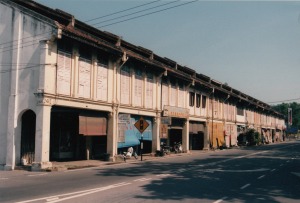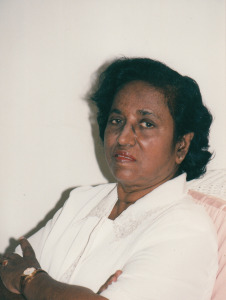Last week my Twitter feed led me to a thought-provoking piece by Raghu Karnad on Richard Flanagan’s Booker Prize-winning novel, The Narrow Road to the Deep North.
Karnad writes: ‘The subject of The Narrow Road is cruelty and survival along the ‘Burma Death Railway’, one of the worst Japanese atrocities in the Second World War.’ Pointing out that the great majority of the men who worked on the railway were Asians – including a large number of Indians – Karnad notes that these men are almost always excluded from the historical account. He concludes: ‘Had The Narrow Road been a memoir, I’d have no questions about what Flanagan chose to include, or not to. Since it is fiction, though, one can wish that he had extended himself toward those many others that were chained to those same rails. Instead, it is a troubling tale of how literature can visit an atrocity again and again, and continue to omit most of its victims.’
I disagree with Karnad on several counts. To begin with I don’t see why the burden of providing a rounded narrative should fall more heavily on a novelist than on the writer of a memoir. If anything, it should be the other way around since a memoir, being a work of non-fiction, necessarily makes certain truth-claims, which is not the case with a novel. Nor do I believe that novelists have a duty to represent every aspect of a historical situation: if that were at all possible then the task would surely fall more to the historian than the novelist. And whether literature has a special responsibility towards victims is another question that is not easily resolved.
But the broader issue that Karnad raises certainly sounded a chord with me: I have long struggled to understand why Indians, and other Asians, are so often omitted from historical accounts of events in which they played a major part. The power to narrate, and who possesses it, is of course at the heart of the matter; equally important perhaps is the ambivalence of those who participated in these events, most notably sepoys.
But there is another aspect to it too, as I discovered while working on my 2000 novel, The Glass Palace. In researching the book’s historical background I
took to the road in Malaysia,
seeking out men,
and women, of Indian origin
[Puan Sri Janaky Athi Nahappan of the Rani of Jhansi regiment]
who had played a part in the Second World War.
Many of the men who worked on the Death Railway were Indian (mainly Tamil) workers from the rubber plantations of what was then the British colony of Malaya. I visited several such plantations, hoping to find survivors: even though the war was then more than fifty years in the past, it did not seem impossible that a few men who had worked on the railway would still be alive. But my efforts were unavailing: I met none.
On one occasion I was saddened to learn that a Death Railway survivor had died quite recently on the plantation I happened to be visiting: after the war he had returned to the only home he had ever known and had raised a family there. At the suggestion of one of the managers I went to see the survivor’s son, hoping to learn something about his father’s experiences. This man was, as I remember, in his forties, and spoke a little Hindi as well as English. He confirmed that his father had worked on the Death Railway but was unable to tell me much else. At length, trying to jog his memory, I said: Didn’t your father talk about his wartime experiences? He must surely have spoken of the horrors of the Death Railway?
He fell silent and thought about the question for a bit. His answer, when it came, was to the following effect:
You must understand – the Burma railway was of course a horror beyond imagining for the English and the other white men who worked on it. But at that time, under colonial rule, conditions on rubber plantations were also terrible. For men like my father the difference between what they had to endure there and here was not so very great.
I recall that conversation every time I read about the Death Railway: to think about the implications of those words is to confront degrees of complexity that extend far beyond ‘The War’.
Which war? When? Where?




Please find more details about our SIAM BURMA DEATH RAILWAY – Documentary Film.
Trailer : http://youtu.be/rPMmLSWD9o8?list=UURyADtCY6b4tG3orSrn6sAw (English Version, 03 mins 29 Sec)
IMDB : http://www.imdb.com/title/tt3883834/
Website : http://www.nadodigalcreations.com/
FaceBook : https://www.facebook.com/Nadodigalcreations
This is a documentary film about the Asian Labourers (Indian Tamils, Burmese & Javanese) who worked like slaves at Siam (Thailand) – Burma death railway line during WWII.
Generally the title “Siam-Burma Death Railway” emphasizes the tearful faces of POW’s and their sufferings to the outside world. The Records of WWII are projecting the cruelty of this 415 KM lengthy railway construction by Japanese army and role of POW’s in archives and Libraries. The Books published on this issue after the war by POW’s and their families had announced the wounded experiences of allied forces. The existing war records of WWII are illuminating the stories of POW’s alone.
But the truth is, this railway project was filled with the life and blood drops of thousands of innocent Asian labourer too. Approximately 2,50,000 innocent Asian labourers (from Malaya,Burma and Java) worked in the same railway construction and devoted their life. There is no doubt that the stories of Asian Labourers are unimaginable and peak irony in the war pages. But it was not recognized and registered in the History so far. The names of the Asian Labourers who were killed and affected during the construction are unknown to our current world.
This painful truth had triggered us to make this documentary film. Nearly 10 years have spent to trace & collect the information’s about Asian labourers from commonwealth and other countries. The war chronicles of POW’s, Records of WWII & Historians helped highly to get the outline of Asian labourers.
The main source of this documentary’s strength is survivors. Yes. The survivors from Asian labour side played a major role in this film. Nearly 10 survivors shared their unforgettable experiences in this film without any exaggeration. Their memories didn’t mislay the tormenting experiences after 72 years. Much unpopular information’s about the Labourers are revealed in this documentary through these survivors.
Surprisingly the sorrows of the railway construction were documented in the form of folklore songs by Asian labourers (Malaysia) during the war time. Those songs also navigated us to get more news about this pathetic incident.
The highlighting part of this film is the participation of great Historical Researchers Dr.David Boggett, Emeritus Professor, Kyoto University, Japan, Mr. Rod Beattie, Director, Thai-Burma Railway Museum, Thailand & Prof.M.Annamalai, India. The above mentioned scholars had shared and revealed concrete information in this project and some of that are very new to South East Asian Indian community.
This documentary film was released in Paris and London in July 2014. It got released in Pondicherry (india) and Malaysia recently. We are planning to screen this documentary film to the common wealth & other important countries. Our journey will continue till the task get end.
Our purpose of this documentary screening is to create awareness to outside world.
On 14th October 2014 Richard Flanagan was announced winner Of the Man Booker Prize 2014 for his “The Narrow Road to the Deep North”.
The Production Team
Nadodigal creations.
dear mr ghosh
this comment has nothing to do with this post…. but is very important for me. you see my problem is that you promised us a book in 2014. the third of the ibis trilogy. i read the river of smoke in 2012 and kept waiting.. the characters filling my thoughts. ever since jan 14 i kept making rounds of bookstores… and found an equal admirer(a salesman at crossword, mumbai, with very thick specs) who seems to be chasing your publisher for some news on the book, together we sit and lament. please please end my misery, i am a huge fan, so in love with all the characters and the strange turns their lives are taking. i dont think i have ever waited for a book with such longing. this seened to be the only way i could get to you.
regards
an ardent fan
Thanks very much for your letter. ‘Flood of Fire’, the third book in the IBIS TRILOGY will appear in May 2015. I’m sorry that you will have to wait that long but a 2014 publication was not possible.
best
Amitav